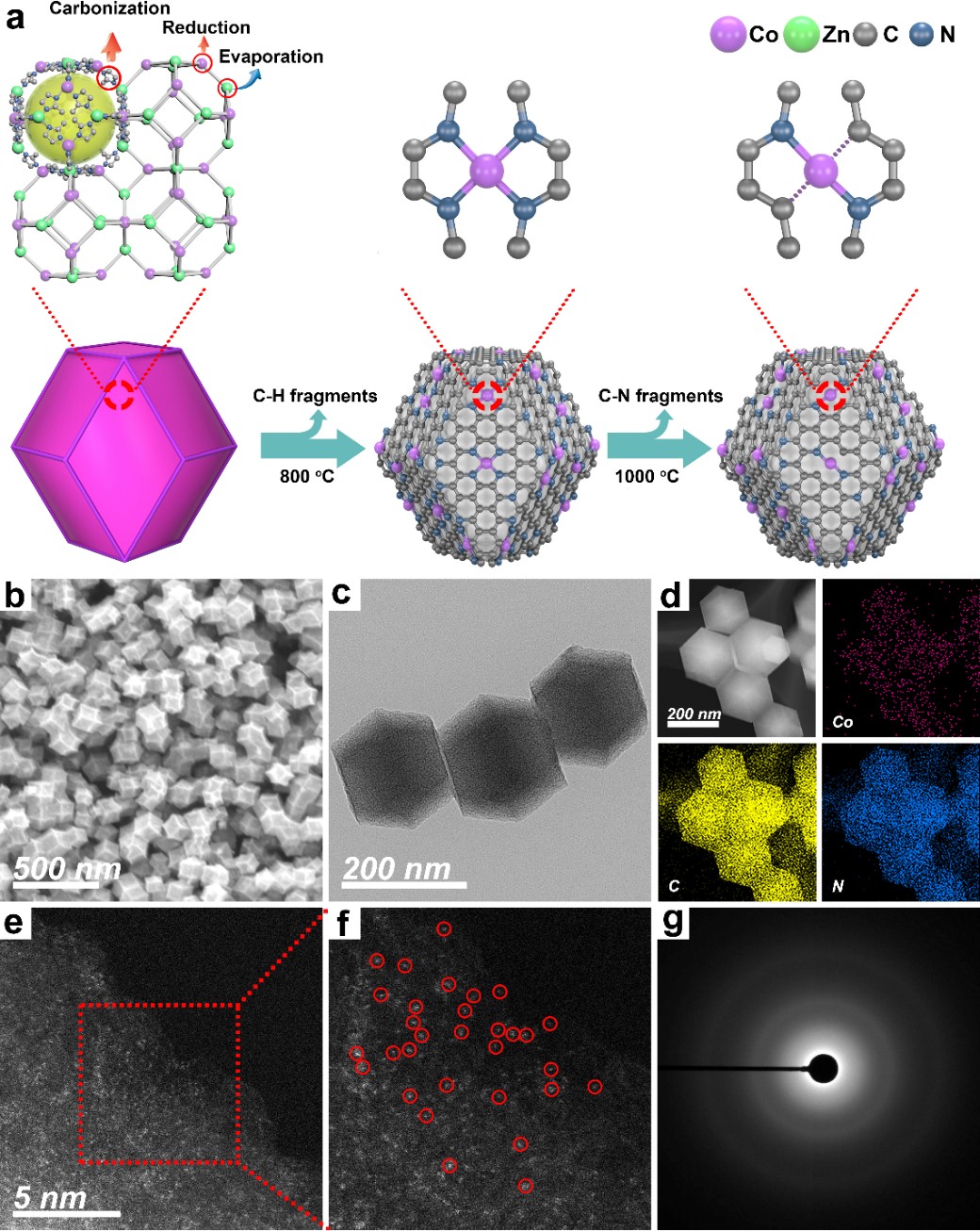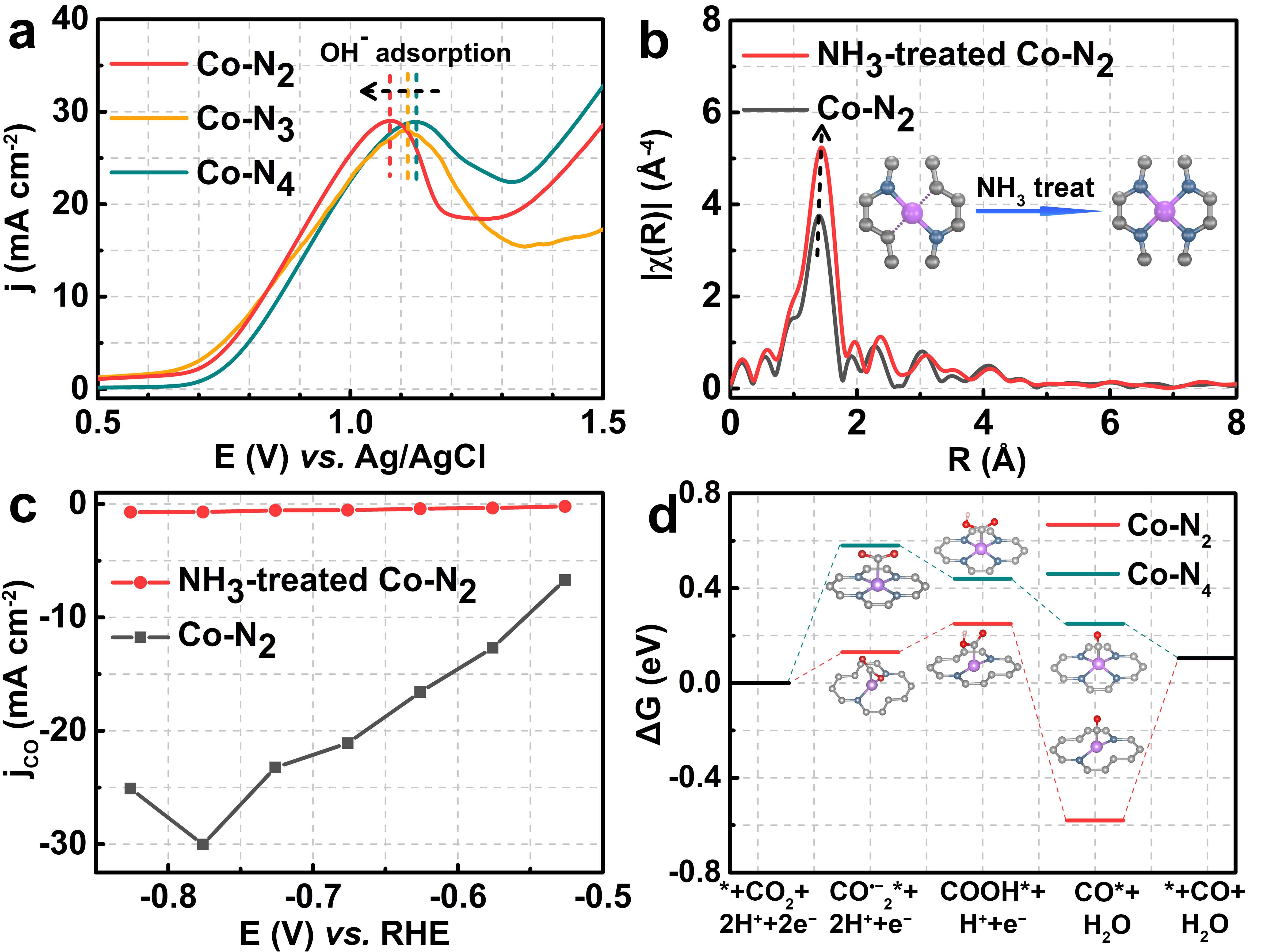Recent advances in carbon dioxide electroreduction
Considering the increased atmospheric carbon dioxide (CO2) concentration, electroreduction of CO2 into value-added products represents a promising approach to curb the anthropogenic CO2 emissions and alleviate the energy crisis. To gain the practical electrocatalyst enabling low overpotential and high selectivity, several metal-based nanostructures such as functionalized metal, metal oxides, and metal disulfide have been developed. However, the intrinsic mechanism in activation of CO2 into the CO2•− intermediate and how the microstructures compose of metal and native moieties influence the electrocatalytic activity still remain elusive. The emerging atomically dispersed metal catalysts, with definite structure as active sites, provide possibility to explore the structure-activity relationship.

To strength the molecular understanding in the reaction intermediates and the reactive sites, iChEM researcher, Prof. Yuen Wu’ (USTC) group created a series of atomically dispersed Co catalysts with different N coordination numbers and study their catalytic performance towards CO2 reduction. The modulation in the surrounding N numbers of central Co sites is based on controlling of volatile C-N fragments at different pyrolysis temperatures. The decreased coordinating N results in more unoccupied 3d orbitals of Co atoms, which benefits the adsorption of CO2•− and increases CO2 reduction rate. As a result, the catalyst based on Co-N2 sites gained higher activity and selectivity than do nearly inert catalyst mainly comprising Co-N4 sites, with current densities of about 18.1 mA cm−2 and CO faradic efficiency of 94% at a low overpotential of 520 mV. Moreover, the CO formation turnover frequency catalyzed by Co-N2 sites reached a record value of 18,200 hour−1, which surpasses most of the reported metal-based catalysts under comparable conditions. Since the activity, selectivity and durability of single sites catalysts are highly sensitive to their local coordination gesture, this findings underline the importance of coordination tailoring over reactive sites in triggering the efficient CO2 electroreduction.

This work was supported by National Key R&D Program of China 2017YFA, and the National Natural Science Foundation of China.
Back
